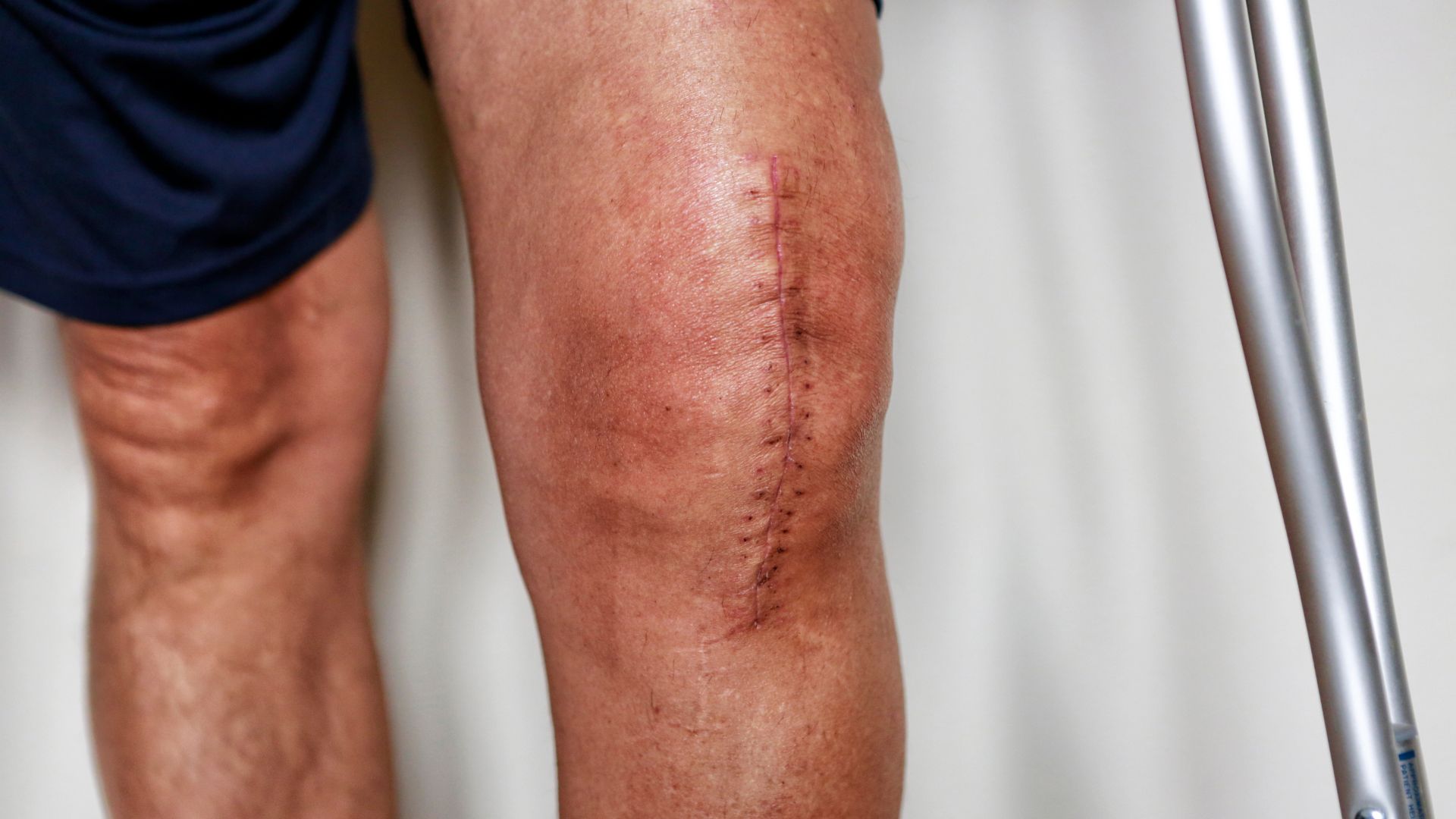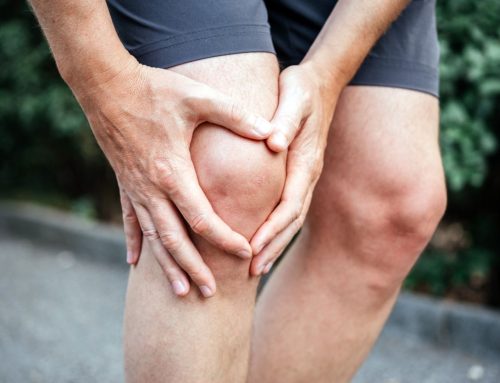When your body repairs a wound, it lays down scar tissue – a natural, protective response. But unlike healthy tissue, scars can be less flexible, less functional, and sometimes trigger pain or stiffness. This can become more than just a cosmetic issue; it can become a real barrier to movement and comfort. With the right scar tissue management approach, however, you can guide your scars toward healing more smoothly, keep them softer, and preserve mobility.
In this article, we explore the composition of scar tissue, how it impacts function, and share evidence-informed strategies—from massage and manual therapy to compression and movement—to support better long-term recovery. Research shows that manual scar therapy, combined with other modalities, can significantly improve scar pliability, reduce stiffness, and ease discomfort.[i]
Table of Contents:
- Understanding Scar Tissue
- Factors That Influence Scar Healing
- Scar Tissue Management Approaches
- When to Seek Professional Support
- Key Takeaways
Understanding Scar Tissue
Scar tissue is your body’s way of patching up a wound, primarily by producing collagen – the same structural protein found in skin, tendons, and ligaments – but arranged differently than in healthy tissue.[ii]
In normal skin, collagen fibers have a more random, net-like orientation that allows some stretch and flexibility; in scar tissue, however, they tend to align more parallel and become denser, which reduces elasticity.[iii] Over time, the scar matures, and collagen type III (common in early healing) is gradually replaced by more rigid type I collagen, though it rarely returns to exactly the same structure as before injury.
Not all scars are alike – they vary by type, appearance, and behaviour. Some common categories include:
- Hypertrophic scars: Raised scars that stay within the boundary of the original wound. They often develop from tension or excessive collagen production and may shrink over time.[iv]
- Keloids: More aggressive scars that grow beyond the original wound margins and can continue growing, even long after the injury has healed.[v]
- Atrophic (depressed) scars: Scars characterized by a net loss of collagen – essentially “sunken” areas – common in acne or certain types of trauma.[vi]
Some research also groups scars into endotypes (eg. stretched/flat, contracted, raised, atrophic) to help anticipate how they behave and respond to treatments. Understanding which kind of scar you’re working with is key, because that influences how you manage it and when you should seek professional input.
Factors That Influence Scar Healing
Not all scars heal the same way – several personal and environmental factors affect how they look and feel over time:
- Genetics: Some people are more prone to forming hypertrophic scars or keloids due to inherited differences in collagen production and immune response.[vii]
- Age: Younger skin tends to produce more collagen, which can lead to thicker, more raised scars, while older skin usually heals more slowly and present as thinner scars.
- Type and location of the injury or surgical incision: Areas of high skin tension, such as the chest, shoulders, and joints, are more likely to develop raised or stretched scars, which is why surgeons try to place incisions along skin-tension (Langer’s) lines whenever possible.[viii]
- Wound care: Proper wound care during the early stages – including cleaning, hydration, and infection prevention – is another critical factor, since delayed healing or infection can worsen scar outcomes.[ii]
- Lifestyle choices: Adequate protein, vitamin C, and zinc intake support collagen formation and tissue repair, while dehydration or poor nutrition can slow recovery and increase complication risk.[ix] Smoking is strongly linked to impaired wound healing and can result in thicker, less flexible scars.[x] Sun exposure is another often-overlooked factor – UV rays can darken scars permanently, making sun protection an important part of care.
Scar Tissue Management Approaches
Early Care and Wound Management
Proper scar management begins with how the wound is cared for in the first days to weeks after injury or surgery. A moist wound environment is a well-established principle in modern wound care. Keeping the wound clean and moist promotes faster skin cell repair, better collagen organization, and fewer complications.
For closed wounds and healed incisions, silicone gels or sheets is one of the best-supported conservative treatments to reduce the risk of hypertrophic scarring and improve scar texture, redness, and itchiness.[ii]
Myofascial Release and Massage for Scar Tissue Management
Once the incision has closed and been cleared by a healthcare provider, gentle scar massage can improve circulation, soften adhesions, and restore tissue mobility. Techniques such as cross-friction massage or myofascial release can be beneficial when performed consistently. Evidence suggests that manual therapies improve pliability and reduce tightness in post-surgical scars.[xi]
Movement and Stretching for Scar Healing
Movement and controlled stretching play a key role in preventing stiffness and contracture formation. In burn injuries especially, if a burn covers or approaches a joint, early stretching is essential to avoid loss of range of motion and reduce post-burn contracture risk.[xii]
Studies of burn patients who receive early rehabilitation show lower rates and less severe joint contractures versus those with delayed or limited intervention.[xiii]General rehabilitation literature also supports the use of stretch as a preventative strategy to maintain or increase joint mobility.[xiv]
Adjunct Therapies for Scar Tissue Management
For individuals with problematic scars, several medical treatments may be recommended. Pressure therapy (eg. compression garments) can be effective in burn scars. Laser therapy may improve scar colour and texture by targeting abnormal blood vessels or collagen. In some cases, steroid injections are used to flatten hypertrophic or keloid scars.[xv]
Lifestyle and Nutrition to Support Scar Repair
Daily habits play a major role in how scars heal and feel. Gentle, regular movement such as walking, stretching, or guided strengthening helps improve blood flow, flexibility, and tissue alignment.[xvi] Staying well-hydrated – by drinking enough water and keeping the skin moisturized with non-scented or silicone-based products – supports elasticity and comfort[ii] A nutrient-rich diet with vitamin C, zinc, and protein from foods like citrus, berries, poultry, and nuts promotes collagen production and overall tissue repair.xvi Meanwhile, avoiding smoking, excess alcohol, and dehydration helps optimize recovery and scar quality.
Acupuncture for Scar Tissue Healing
Acupuncture for scar tissue treatment specifically helps to stimulates mechanoreceptors and nociceptors in the skin and underlying tissues in a way that enhances the activity of inhibitory neural mediators (meaning chemicals that will counteract the neuropeptides that cause inflammation). By curbing inflammation caused by the nerve signals that were in overdrive by the scar tissue, acupuncture helps facilitate the healing process.
When to Seek Professional Support
While most scars heal gradually over time, some require professional assessment and intervention. You should consider consulting a physiotherapy, dermatologist, or plastic surgeon if your scar becomes painful, thick, itchy, raised, restricts movement, or appears red and enlarging months after injury. These may be signs of hypertrophic scarring or keloid formation, which benefit from early treatment such as silicone therapy, steroid injections, or laser therapy.[xvii]
Scars that limit joint mobility or cause discomfort with stretching may also benefit from scar-specific physiotherapy, which can include massage, mobilization, acupuncture and movement retraining to restore function.[xviii]
If your scar shows signs of infection – such as warmth, discharge, or increasing redness – see your healthcare provider promptly.[xix] Remember, seeking help early can make a significant difference in the long-term appearance and mobility of the scar.
Key Takeaways
Scar tissue management is not just about appearance – it’s about restoring comfort, flexibility, and confidence in your movement. At Propel Physiotherapy, we take a comprehensive, hands-on approach to help you manage scars effectively.
Whether your goal is to reduce tightness, improve mobility, or prevent long-term adhesions, our team integrates manual therapy, movement retraining, acupuncture and patient education tailored to your needs. Early intervention can make a big difference in how a scar heals and how your body feels over time.
If you’re experiencing stiffness, pain, or reduced movement related to scar tissue – from surgery, injury or burns – our physiotherapists can guide your through safe, evidence-based techniques to help restore tissue mobility and function.
References
[i] Agnieszka Lubczyńska, Agnieszka Garncarczyk, Dominika Wcisło‐Dziadecka. Effectiveness of various methods of manual scar therapy. Skin Research and Technology. 2023;29(3). doi:https://doi.org/10.1111/srt.13272
[ii] Scars: Treatment and Cause. Cleveland Clinic. Published August 29, 2023. Accessed September 29, 2025. https://my.clevelandclinic.org/health/diseases/11030-scars
[iii] P.M P, Joris J.B Ruurda, Veen van, et al. Collagen morphology in human skin and scar tissue: no adaptations in response to mechanical loading at joints. Burns. 2003;29(5):423-431. doi:https://doi.org/10.1016/s0305-4179(03)00052-4
[iv] Hypertrophic Scars and Keloids: A Complete Overview — DermNet. DermNet®. Published October 26, 2023. Accessed September 29, 2025. https://dermnetnz.org/topics/keloid-and-hypertrophic-scar
[v] Fabbrocini G, Annunziata MC, V. D′Arco, et al. Acne Scars: Pathogenesis, Classification and Treatment. Dermatology Research and Practice. 2010;2010(1). doi:https://doi.org/10.1155/2010/893080
[vi] Ud-Din S, Bayat A. Classification of Distinct Endotypes in Human Skin Scarring: S.C.A.R.—A Novel Perspective on Dermal Fibrosis. Advances in Wound Care. 2022;11(3):109-120. doi:https://doi.org/10.1089/wound.2020.1364
[vii] Zhu DZ, Yao B, Cui XL, Huang S, Fu X. [Effects and mechanism of age on the stiffness and the fibrotic phenotype of fibroblasts of human hypertrophic scar]. PubMed. 2021;37(10):937-945. doi:https://doi.org/10.3760/cma.j.cn501120-20200810-00374
[viii] Skin tension lines. DermNet®. Published October 26, 2023. Accessed October 1, 2025. https://dermnetnz.org/topics/skin-tension-lines
[ix] Seth I, Lim B, Cevik J, et al. Impact of nutrition on skin wound healing and aesthetic outcomes: A comprehensive narrative review. JPRAS Open. 2024;39:291-302. doi:https://doi.org/10.1016/j.jpra.2024.01.006
[x] McDaniel JC, Browning KK. Smoking, Chronic Wound Healing, and Implications for Evidence-Based Practice. Journal of Wound, Ostomy & Continence Nursing. 2014;41(5):415-423. doi:https://doi.org/10.1097/won.0000000000000057
[xi] Almadani YH, Vorstenbosch J, Efanov JI, Xu L. Dupuytren’s Disease: An Outcomes-Focused Update. Seminars in Plastic Surgery. 2021;35(03):216-222. doi:https://doi.org/10.1055/s-0041-1731631
[xii] Procter F. Rehabilitation of the burn patient. Indian Journal of Plastic Surgery. 2010;43(3):101. doi:https://doi.org/10.4103/0970-0358.70730
[xiii] Tan J, Chen J, Zhou J, et al. Joint contractures in severe burn patients with early rehabilitation intervention in one of the largest burn intensive care unit in China: a descriptive analysis. Burns & Trauma. 2019;7. doi:https://doi.org/10.1186/s41038-019-0151-6
[xiv] Harvey LA, Katalinic OM, Herbert RD, Moseley AM, Lannin NA, Schurr K. Stretch for the treatment and prevention of contractures. Cochrane Database of Systematic Reviews. 2017;2017(2). doi:https://doi.org/10.1002/14651858.cd007455.pub3
[xv] Scars: Diagnosis and treatment. Aad.org. Published 2016. Accessed October 14, 2025. https://www.aad.org/public/diseases/a-z/scars-treatment
[xvi] Barchitta M, Maugeri A, Favara G, et al. Nutrition and Wound Healing: An Overview Focusing on the Beneficial Effects of Curcumin. International Journal of Molecular Sciences. 2019;20(5):1119-1119. doi:https://doi.org/10.3390/ijms20051119
[xvii] Barchitta M, Maugeri A, Favara G, et al. Nutrition and Wound Healing: An Overview Focusing on the Beneficial Effects of Curcumin. International Journal of Molecular Sciences. 2019;20(5):1119-1119. doi:https://doi.org/10.3390/ijms20051119
[xviii] Hypertrophic Scar: What Is It, Causes, Treatment. Cleveland Clinic. Published August 30, 2023. Accessed October 14, 2025. https://my.clevelandclinic.org/health/diseases/21466-hypertrophic-scar
[xix] Scar Management. Physiopedia. Published 2022. Accessed October 14, 2025. https://www.physio-pedia.com/Scar_Management
[xx] Cuts and scrapes: First aid. Mayo Clinic. Published 2025. Accessed October 14, 2025. https://www.mayoclinic.org/first-aid/first-aid-cuts/basics/art-20056711
Written by










